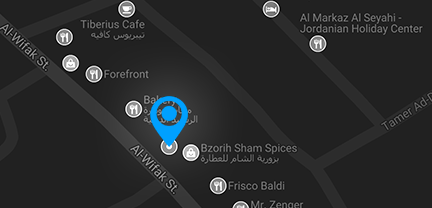Overview
The Adobe Certified Associate ACA
Dreamweaver
Adobe Certified Associate (ACA) certification is the perfect place to recognize and inspire creativity in your students. It allows students to approach tasks and projects in new ways, working out solutions they couldn’t have seen before; and helping you as a teacher become involved with your student’s creative process on a new level.
ACA certification offers your students a foundation for success by validating their digital skills, and offering you the ability to assess your student’s progress, engagement, and involvement.
تعد شهادة Adobe Certified Associate (ACA) المكان المثالي للتعرف على الإبداع والإلهام لدى طلابك. إنها تتيح للطلاب التعامل مع المهام والمشاريع بطرق جديدة ، والعمل على إيجاد حلول لم يتمكنوا من رؤيتها من قبل ؛ ومساعدتك كمدرس على المشاركة في العملية الإبداعية لطلابك في مستوى جديد.
تقدم شهادة ACA لطلابك أساسًا للنجاح من خلال التحقق من صحة مهاراتهم الرقمية ، وتوفر لك القدرة على تقييم تقدم الطالب ومشاركته.
Exam Roadmap
- Module 1: Working in the Web Industry
- Module 1: Working in the Web Industry
- Identify the purpose, audience, and audience needs for a website.
- Determine whether content is relevant to the purpose, the audience, and audience needs.
- Communicate with colleagues and clients throughout the project.
- Demonstrate knowledge of techniques for communicating ideas about expected outcomes with peers and clients.
- Demonstrate knowledge of basic project management concepts.
- Demonstrate an understanding of the type of permissions required to use specific content.
- Identify legal and ethical considerations for using third-party assets such as copyright, permissions, and licensing.
- Identify when and how to obtain permissions in order to use code and content.
- Demonstrate an understanding of key technologies related to web design and development.
- Demonstrate fundamental knowledge of internet terminology.
- Demonstrate fundamental knowledge of search engines and search
- Demonstrate fundamental knowledge of web security concepts.
- Demonstrate knowledge of key web development concepts.
- Demonstrate knowledge of basic design principles and best practices employed in the industry.
- Communicate visually using user interface elements and design techniques.
- Identify user experience design techniques and practices.
- Identify user interaction design techniques and practices
- Module 2: Project Setup and Interface
- Create a new site with the appropriate settings.
- Set appropriate options for defining a new site.
- Create a new page for specific project needs.
- Navigate, organize, and customize the application workspace.
- Identify and manipulate elements of the Dreamweaver interface
- Organize and customize the workspace.
- Configure application preferences.
- Use non-visible design tools in the interface to aid in project workflow.
- Configure content viewing options
- Navigate a site.
- Manage assets in a project.
- Add and organize assets
- Configure assets in a project.
- Module 3: Organizing Content on a Page
- Organize page structure.
- View, edit, and manage the structure of a page.
- Apply responsive and adaptive design concepts.
- Design a web page that works well on multiple devices.
- Module 4: Working with Code to Create and Modify Content
- Organize and display content using HTML.
- Identify the appropriate use of , , , and tags
- Differentiate between block and inline elements.
- Format content using headings, paragraphs, and lists.
- Insert and manipulate images, video, and sound, and animation.
- Create, manage, and edit hyperlinks.
- Apply table and semantic elements to describe content.
- Display and organize information using tables.
- Display and organize information using other basic semantic elements
- Style a web page using CSS.
- Configure initial page properties.
- Manage fonts.
- Create and manage CSS rules using the CSS Designer panel.
- Create and use inline styles, internal styles, and external style sheets
- Create and modify selectors that reference specific HTML elements.
- Apply common CSS declarations.
- Organize a web page layout with relatively and absolutely positioned div
- tags and CSS styles.
- Add interactivity using JavaScript.
- Create and manage forms.
- Add interactivity to a web page.
- Module 5: Publishing Digital Media
- Prepare project for publishing.
- Set up for testing and publishing.
- Check project for errors and project specifications.
- Publish a web site.
- Save web pages.
- Publish a live site.
 ACA_Exam_Objectives_Dreamweaver_2020.pdf 138,91 KB
ACA_Exam_Objectives_Dreamweaver_2020.pdf 138,91 KB



